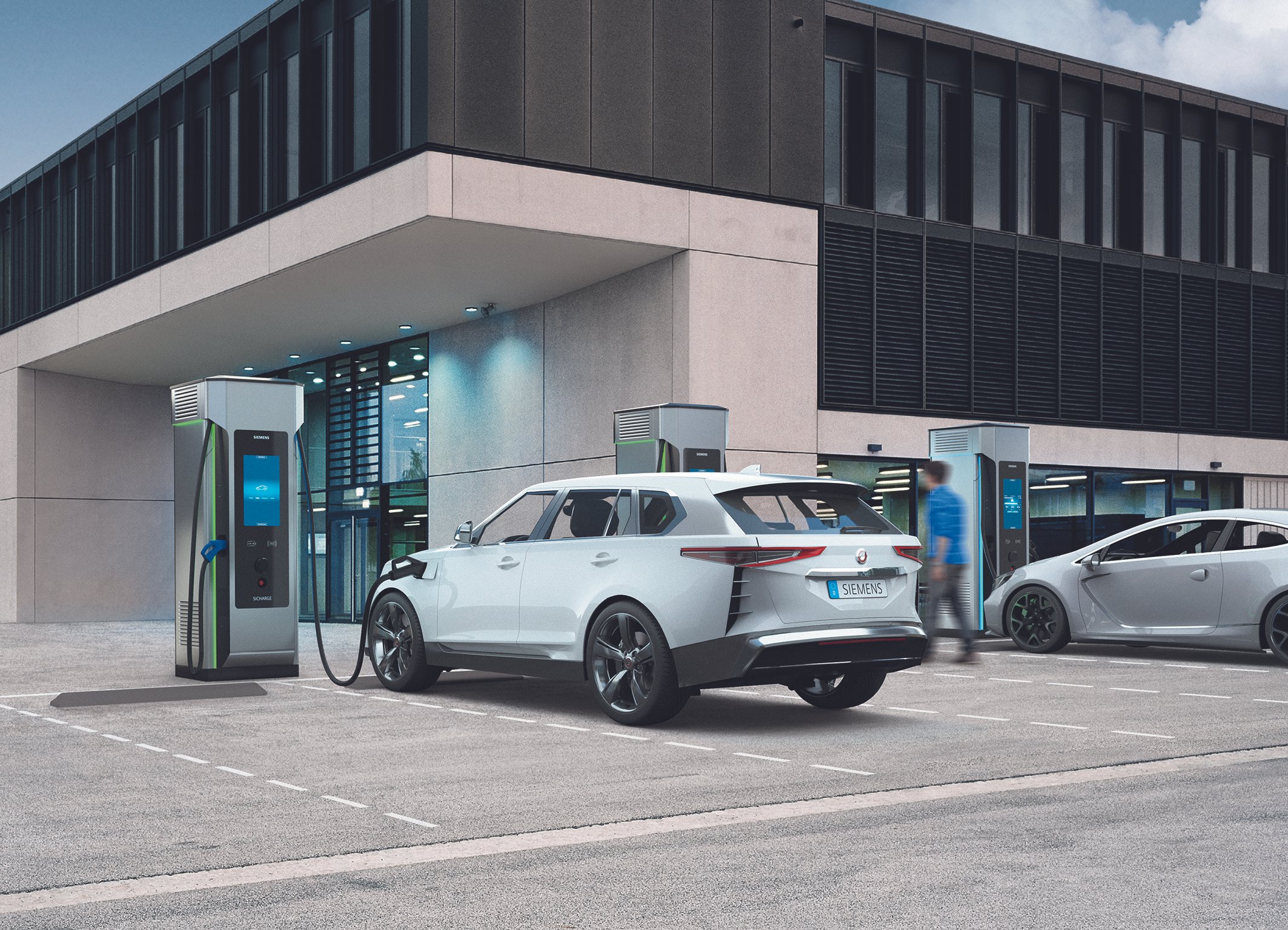The Future of EV CHarging in Ireland
The future of electric vehicle (EV) rapid charging in Ireland holds immense promise, as the country accelerates its transition to cleaner, greener transportation. With ambitious climate goals and an increasing focus on sustainability, the evolution of EV infrastructure in Ireland is poised to play a critical role in reducing carbon emissions and fostering a more sustainable economy. The following explores key developments, challenges, and opportunities shaping the future of rapid EV charging in Ireland.
The Growing Demand for Electric Vehicles
As Ireland seeks to reduce its carbon footprint in line with the European Union's climate targets, the adoption of electric vehicles has surged. The Irish government has committed to having 1 million electric vehicles on the road by 2030, and to achieve this goal, a robust and reliable charging network is essential. Rapid chargers—capable of delivering a significant amount of energy in a short time—are key to ensuring that EV drivers can travel long distances without the anxiety of running out of charge, particularly on long journeys or in rural areas.
Currently, there are a variety of charging options in Ireland, including slow and fast chargers. However, rapid chargers, which can provide up to 100-200 kilometers of range in just 20-30 minutes, will be critical in addressing concerns about convenience and long-range travel. The future of rapid charging in Ireland will likely see a marked expansion in the availability of these high-speed stations, particularly along major transport routes and in urban centers.
Government Support and Investment
The Irish government has recognized the importance of expanding the EV charging network and has committed to investing in the infrastructure needed to support the EV transition. Initiatives like the Climate Action Plan 2023 and Project Ireland 2040 have earmarked significant funding for the development of electric vehicle infrastructure, including the installation of more rapid chargers. The government’s support for green energy and low-carbon transport systems is expected to accelerate the rollout of charging stations across the country.
One of the key future developments in the rapid charging network is the planned installation of ultra-fast chargers that can deliver power at rates of 350 kW or higher. This would significantly reduce the time required to charge an EV, making it more convenient for drivers and further encouraging the adoption of electric cars. Investment in this area is crucial, as Ireland’s relatively small size means that a dense and accessible network of charging points will be essential for the widespread uptake of EVs.
Addressing Challenges
Despite the optimistic outlook, several challenges remain in the development of a rapid EV charging network in Ireland. One of the primary issues is the geographic disparity in charging infrastructure. While urban areas like Dublin, Cork, and Galway have relatively good access to rapid chargers, rural areas and less-populated regions are often underserved. Expanding rapid charging stations to these areas will require careful planning, coordination between public and private sector players, and possibly incentives for operators to invest in less commercially viable locations.
Another challenge lies in the need for grid capacity upgrades. As the demand for electricity rises with the growing adoption of electric vehicles, the national grid will need to be upgraded to ensure reliable and sustainable energy delivery. This will involve both expanding capacity and integrating renewable energy sources, such as wind and solar, to power the charging stations in an environmentally responsible manner.
Innovations in Charging Technology
The future of rapid charging in Ireland will also benefit from technological innovations. For instance, advancements in battery technology will likely lead to more energy-dense batteries, enabling faster charging times and longer ranges for EVs. Moreover, smart charging solutions that optimize energy use and grid demand will play an important role in improving the efficiency of the charging network. These systems could prioritize charging during off-peak hours, thereby reducing strain on the grid and lowering electricity costs.
The development of vehicle-to-grid (V2G) technologies could also transform the way rapid charging is integrated into the broader energy system. In V2G, EVs can discharge power back into the grid when not in use, helping to balance demand and supply, particularly during peak periods.
Conclusion
The future of electric vehicle rapid charging in Ireland is bright, driven by strong government backing, technological advancements, and the growing demand for sustainable transportation. While challenges such as rural accessibility, grid capacity, and infrastructure investment remain, the country is on track to build a comprehensive and efficient charging network that supports the widespread adoption of electric vehicles. With continued innovation and collaboration across sectors, Ireland is well-positioned to lead the way in electric mobility, contributing to a cleaner, more sustainable future for all.
Take a minute to write an introduction that is short, sweet, and to the point. If you sell something, use this space to describe it in detail and tell us why we should make a purchase. Tap into your creativity. You’ve got this.

Why Brite
Brite are Charging Ahead: The Vital Importance of Irish EV Car Charging Infrastructure
In the rapidly evolving landscape of transportation, one revolution is unmistakably clear: the rise of electric vehicles (EVs). With the world increasingly turning towards sustainable alternatives, EVs have emerged as a promising solution to reduce carbon emissions and combat climate change. However, the widespread adoption of electric vehicles hinges not only on the availability of innovative electric cars but also on the development of a robust charging infrastructure. In this article, we'll delve into why the establishment of EV car charging infrastructure is crucial for accelerating the transition to a cleaner, greener future.
Driving Range Anxiety
One of the primary concerns that prospective EV owners face is range anxiety—the fear of running out of battery charge before reaching their destination. This anxiety stems from the perception that there aren't enough charging stations available to support long journeys. Just as a traditional Petrol and Diesel cars rely on a network of Petrol stations, EVs depend on a comprehensive charging infrastructure to provide reassurance to drivers that they can charge their vehicles conveniently, wherever they go.
Encouraging Adoption
A robust EV charging network is essential to encourage more people to make the switch to electric vehicles. By ensuring that charging stations are readily accessible, potential buyers are more likely to overcome their reservations about range limitations and embrace EVs. Additionally, the convenience of charging infrastructure at workplaces, shopping centers, and public parking spaces can further incentivise adoption by integrating charging seamlessly into people's daily routines.
Fostering Economic Growth
Investment in EV car charging infrastructure is not just about environmental sustainability—it's also a strategic move for economic growth. The development of charging stations creates jobs, stimulates local economies, and fosters innovation in clean energy technologies. Moreover, as more EVs hit the roads, there's a growing market for related industries, such as renewable energy production, battery manufacturing, and smart grid technologies, which can drive economic prosperity and reduce dependence on fossil fuels.
Reducing Carbon Footprint
Transportation is a significant contributor to greenhouse gas emissions, accounting for a substantial portion of Irish carbon emissions. By transitioning to electric vehicles powered by renewable energy sources, we can significantly reduce our carbon footprint and mitigate the adverse effects of climate change. However, this transition is only effective if the electricity used to charge EVs comes from clean, renewable sources. Therefore, the expansion of EV charging infrastructure should go hand in hand with the deployment of renewable energy projects to maximize environmental benefits.
Paving the Way for the Future
Investing in EV car charging infrastructure isn't just about meeting current needs—it's about preparing for the future of transportation. As technology advances and battery capacities improve, the demand for electric vehicles will continue to rise. By proactively building a robust charging network, policymakers and industry stakeholders can ensure that our transportation infrastructure keeps pace with evolving consumer preferences and technological advancements. This proactive approach will facilitate a smooth transition to a future where electric vehicles are the norm rather than the exception.
Conclusion
We at Brite believe the importance of EV car charging infrastructure cannot be overstated. It is the backbone of the electric vehicle revolution, addressing range anxiety, encouraging adoption, fostering economic growth, reducing carbon emissions, and paving the way for a sustainable future. To realize the full potential of electric vehicles and reap the associated environmental and economic benefits, concerted efforts are needed to expand and enhance the charging infrastructure worldwide. By investing in EV charging infrastructure today, we are not just powering cars—we are driving progress towards a cleaner, greener tomorrow.
Contact colin@brite.ie if you have any questions.

